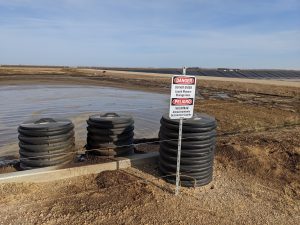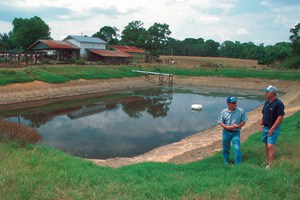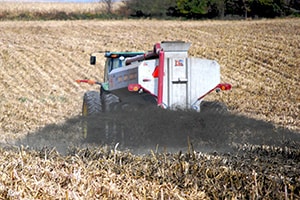Manure is a valuable resource for crop production. When working with manure, remember to work safely and avoid cutting corners. As manure decomposes, invisible and potentially hazardous gasses (ammonia, hydrogen sulfide, methane, and carbon dioxide) are released. In addition, safety hazards can exist along the path of manure management, especially during busy seasons involving long hours. Keep this safety checklist in mind as you work with manure, including storage, agitation, pumping, transportation, and application.
You and/or your employee(s) can use this form to complete safety checks on your farm. Use the form below to list additional safety checks you think are important when inspecting your farm. Keep the completed forms for follow-up, future reference, and inspections.
SAFETY CHECKLIST
The checklist below lists questions to help you to stay safe and healthy during manure management:
- Is entry to manure storage areas limited? Fencing, locked gates, and warning signs can prevent unauthorized access. Remove livestock from manure areas before agitation or pumping. Only enter confined spaces if it is absolutely necessary and you have the proper training, qualifications, and safety equipment.
- Is the storage well-ventilated? Ensure maximum ventilation before and during pumping and while working nearby.
- Have you checked for fire hazards? Disconnect any electrical equipment or ignition sources. Do not smoke near manure storages or while handling manure.
- Do you have a working gas monitoring system? Select monitors based on hazards (see technical guidance resource). If the system alarms, all workers should move away, use a self-contained escape respirator if necessary, and return only when measurements show no health risk.
- Do you have at least two people present during manure handling?
- Are all slow-moving vehicle signs on road transportation equipment in good condition? Are the signal and brake lights working correctly?
- Are all workers trained on safe manure handling and biosecurity? Applicators should take steps to prevent spills and be aware of the rules regarding setbacks and applying near sensitive areas.
- Does your safety plan address fatigue? Ensure adequate staffing, and consider work hour maximums, rest minimums, and rotating shifts frequently.
- Are you prepared for an emergency? Post all emergency contacts, addresses, and plans. Ensure the proper personal protective equipment (self-contained breathing apparatus and harness with lifeline) are available. Designate safe exits and ensure fire extinguishers are full and up to date.
You and/or your employee(s) can download and print a pdf checklist to complete safety checks on your farm. Keep the completed forms for follow-up, future reference and inspections.
DOWNLOAD PDF CHECKLIST
MORE FARM SAFETY CHECKS
Disclaimer: The facts and information listed above are suggestions for your safety, but are in no way a comprehensive and exhaustive list of all actions needed to insure your safety.






